How we split the beehive.
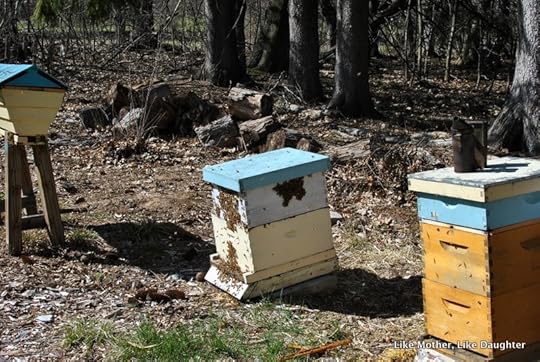
A couple of weeks ago the Chief split the beehive. I’m going to explain to you what that means and why you do it. You have bees, right? You should get some.
Bees are individual little creatures, but their colony can be thought of as an organism unto itself. (I thought this was a super insight by the Chief but the other day I read that Aristotle had made this observation. Sometimes the Chief does this to me — passes off some ancient knowledge as his own, and even after almost 37 years of marriage I’m still all “he’s so smart.” But then, it is smart to read — and remember — Aristotle, and also to keep your girlfriend interested.)
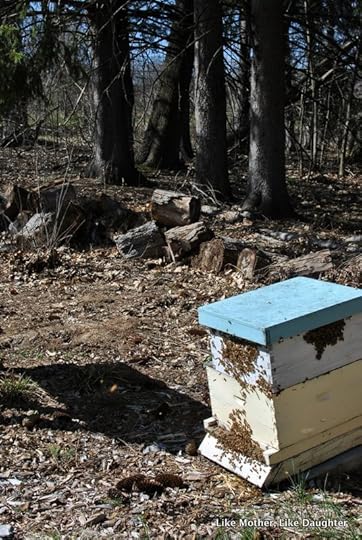
So the bees lay eggs and hatch new bees (their eggs are called brood)… but at a certain point, if the colony gets pretty large, there’s another way they can reproduce: they split the colony, making two colonies from one, and swarming.
They do this by making some of their brood into different kinds of cells called queen cells. They just go on laying their eggs in the ordinary way, but at this point they direct some of them for this other function. This is a mystery.
The queen is quite a bit larger than other bees, and her cell that she starts out in is also quite a bit bigger. So the beekeeper sets himself the task of checking the brood, to see if the laying is going well, but also to see if there are these larger cells developing. Every once in awhile you pull the brood frames out and give them a little look. (This post has lots of pics and also VIDEOS — very short, as I personally get impatient — they are below.)
The one thing you do not want is for your bees to decide they need a new queen and start making their plans to swarm away!
On the other hand, if they are getting so big for the hive that they want to do this, and if you manage it, you essentially have free bees! You can take that developing new queen and some of the bees and set them up in a new hive — getting yourself two hives for the price of one, which is a pretty sweet deal, let me tell you! (The colony is the bees relating to the queen. The hive is the place they live.)
If the bees have made it through the winter (always a source of anxiety when you live where we do), when things start warming up and the plants start to produce pollen, you can be pretty sure the bees will start to think about swarming. You really have to catch them before this happens, because unless you are lucky and they swarm to a nearby low-hanging branch or something, they just… leave.
We do have one beekeeping acquaintance whose bees do just that — they go to a nearby little fruit tree and all he does is shake them into a box and put them in a new hive. Bees often swarm to the same spot (having left markers behind), so this fellow really has it made — he has his own little colony production service going, and he even made a dedicated box that fits right over the particular branch they swarm to — that’s how often they do it!
But here at the Manse that’s not how it works. They just leave.
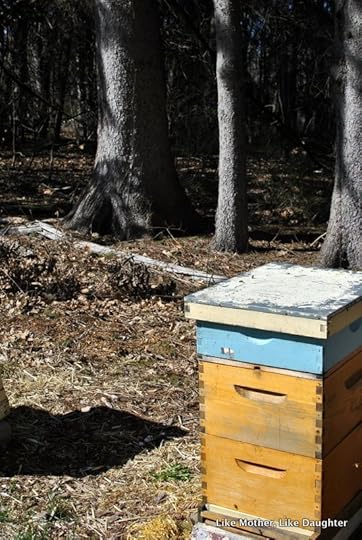
We have an empty hive ready to go. This year, we are really trying to keep our bees happy and feeling uncrowded. We normally manage to get 40 pounds of honey in a harvest; our new goal is to see if we can get 100 lbs.
You can see: nothing is going on here in this hive. No bees at all, because the rather weak colony died over the winter, sadly:
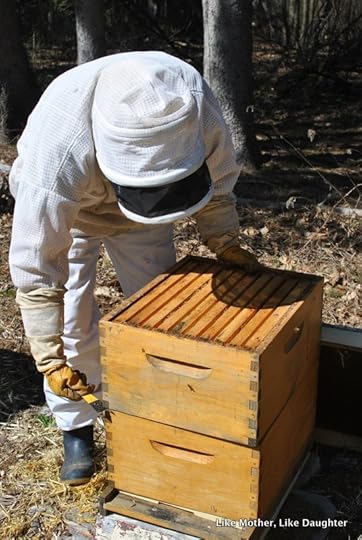
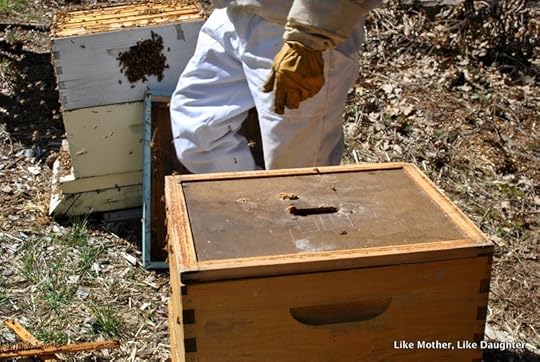
He’s really well suited up because it turns out that he tests as extremely allergic to honey-bee stings. Yikes. He’s taken the treatments and I hope they have worked, because he’s determined to continue with all the gals.
Me, not so much (and actually, later I ditched the suit altogether because it’s hard to take pictures with a veil on):
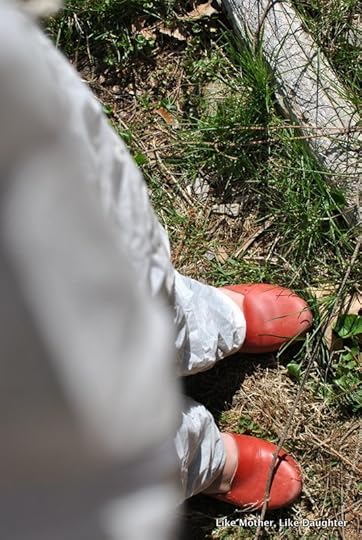
This is the busy hive… very:
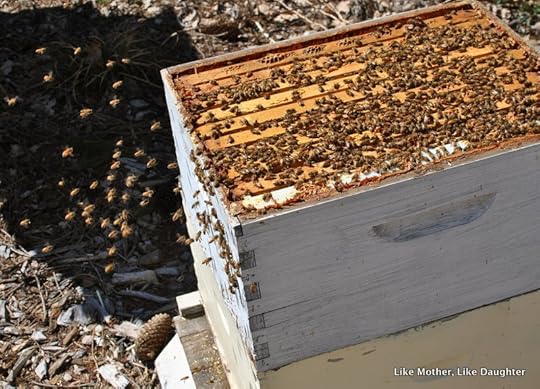
He pulls out the frames of the busy hive to look at them. (26 seconds)
Nothing unusual in this one:
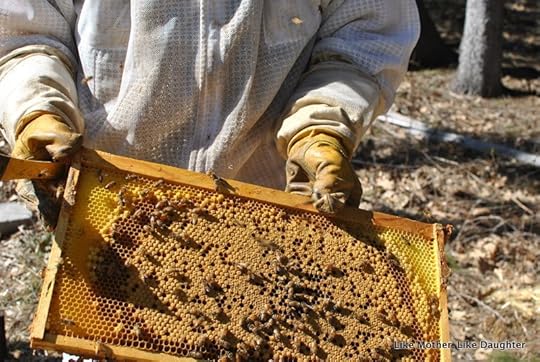
These do seem to be queen cells — see them there, below, at the top of the frame, the two bigger, lighter blobs than the others?
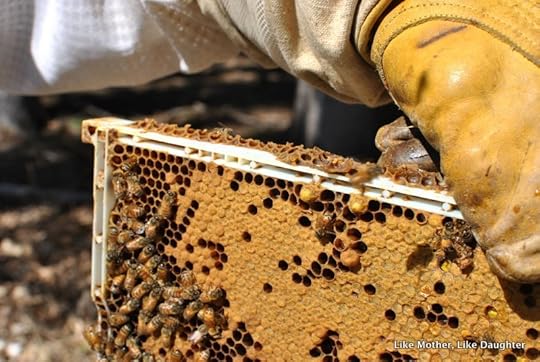
Here’s more on that (9 seconds)
(But, full disclosure — we are not absolutely sure, so this is all experimental here — it’s just that with one thing and another, we had to do the splitting right then. We’ll see if it takes. In any case, this is what you do.)
So this frame goes in the new hive. You are taking out the empty frames in the empty hive, sticking them in the busy one, and putting full frames of brood in the empty one. Swapping, as it were.
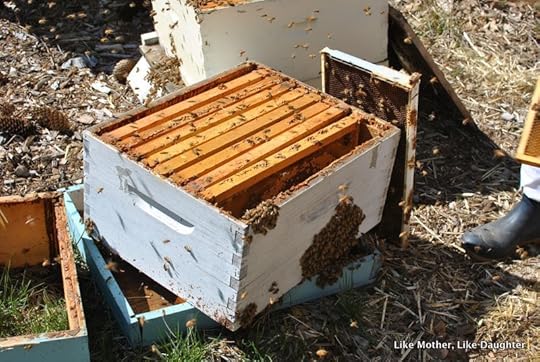
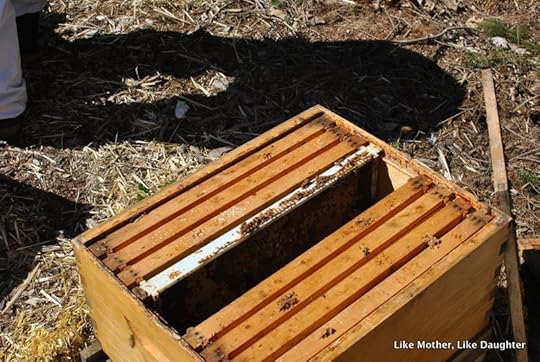
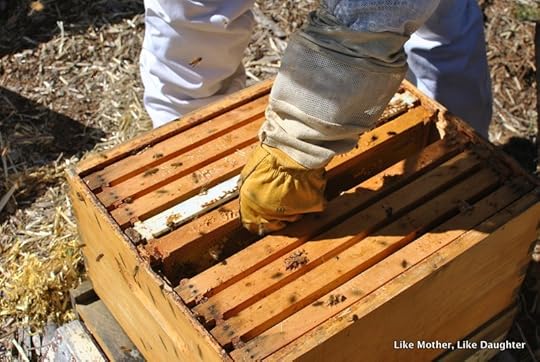
Here’s a video of that process (1 minute 8 seconds):
How do the bees not go nuts and sting everything in sight?
Well, you have your calm demeanor, your preternatural lack of fear, and possibly a good bee suit. You also have your smoker:
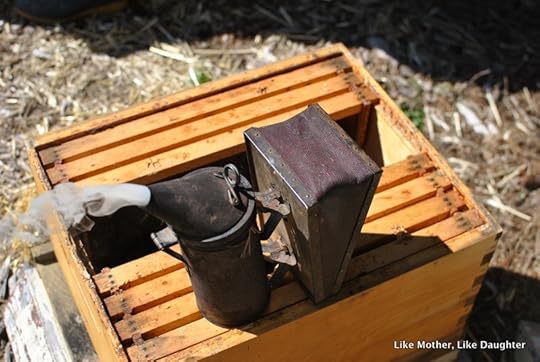
A tip from the bee-whisperer, our former bee inspector Ken, who kept hundreds of hives, drove around Massachusetts tending to people’s bees, and also consults with NASA when they send bees to space (which they do, interestingly enough): keep the smoker as cool as you can — it’s the smoke that slows them down, but the heat riles them up. Put some green grass on top when it’s going nicely.
Now, this new hive will need honey and, obviously, bees. Normally, the bees do tend to the brood they are with.
So you put some honey frames in the new hive and you shake — really bang! — bees on top. Here is a view of that (17 seconds):
Now the brood frames are in the new hive, along with some honey frames and some extra bees. All that remains is to put a spacer box on top for the feeding jar (10 seconds):
The busy hive also got a spacer for a feeding jar.
Here, he is replacing the entrance reducer, which just prevents them from having to guard a large area from robbing bees. If another colony somewhere (and bees go really far to get food) finds that there is a nice store of honey right here, they will rob. Don’t want that!
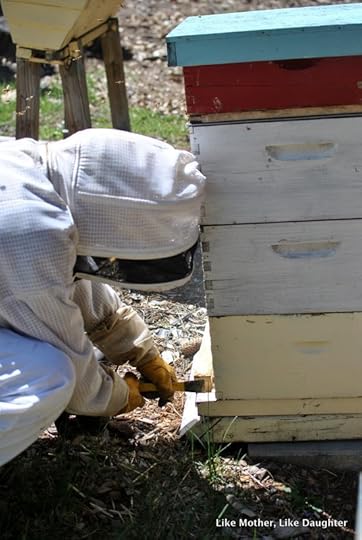
Here Phil is putting on the inner cover and smoking them (15 seconds):
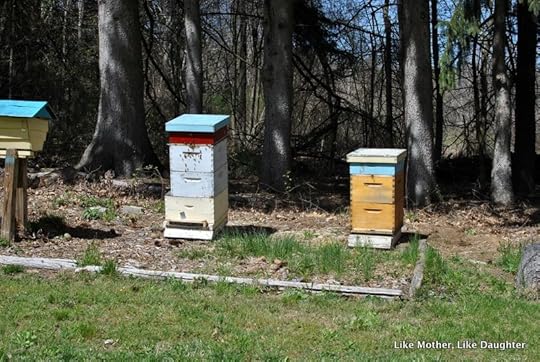
You can see that they have more stories and are looking hopeful.
Now, for extra insurance against the good colony swarming, try checkerboarding. This is when you intersperse the frames with brood with empty frames, so that the queen doesn’t start feeling that her job is done. And then an extra box gets put on top because that way, they all have room to expand without wanting to move out!
A few days ago we checked to see how things were going in the new hive. Signs of life and activity! Let’s hope it takes!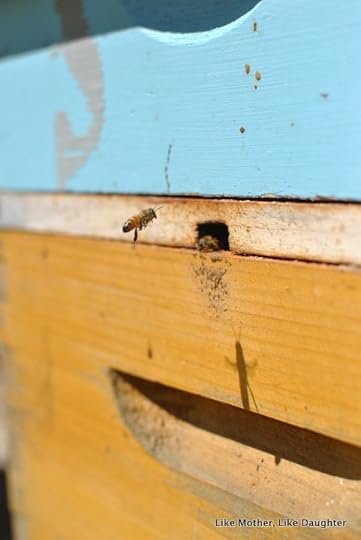
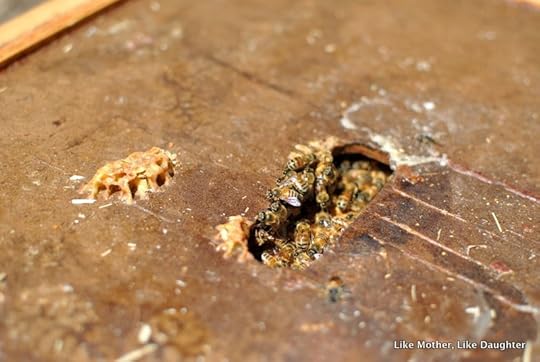
The post How we split the beehive. appeared first on Like Mother Like Daughter.



